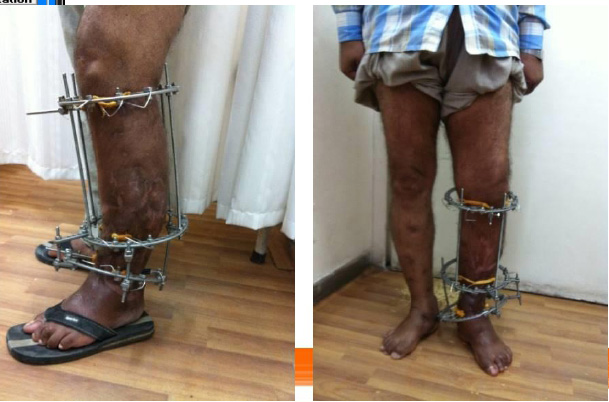Deformity Correction
Overview
Deformity correction focuses on addressing abnormalities in bones and joints that can result from various causes. These deformities can affect muscles, bones, and joints, impacting movement and alignment. In children, deformities may arise from congenital issues, trauma, infections, or developmental conditions, while in adults, they might be due to injuries, infections, or complications from childhood conditions. Dr. Manish Dhawan and his team at Sir Ganga Ram Hospital employ advanced techniques to correct these deformities, a field that has seen significant evolution since Professor Gavriil Ilizarov’s development of distraction osteogenesis in the 1950s. This method transformed the treatment of deformities, malunions, and nonunions. Building on Dr. Dror Paley’s advancements in the 1990s, modern approaches now include a variety of surgical techniques, such as open bony osteotomy, the Ilizarov method, the Rail Fixator System, growth modulation, tendon lengthening, and tendon transfers.

Specific Conditions and Treatments
Genu Valgus (Knock Knee)
Description: This condition is characterized by the knees touching while the feet are apart. Commonly seen in children, often due to Vitamin D deficiency, it may also result from physical injury or infection. Typically, it resolves by age 7 if the distance between the ankles (intermalleolar distance) is less than 8 cm.
Diagnostic Approach: Dr. Manish Dhawan and his team use a standing X-ray with the patella facing forward to assess the angle of deformity and determine its cause.
Treatment:
- Children under 6: Observation with Vitamin D and calcium supplements if genu valgus is less than 15 degrees.
- Older Children: Growth modulation techniques are considered if there is sufficient growth potential.
- Adults: Corrective osteotomy is often required, performed by Dr. Dhawan and his team.
Genu Varus (Bow Leg)
Description: Genu varus involves bowing of the tibia and is typically physiological, resolving by age 3. Pathological genu varus may result from Vitamin D deficiency, which softens the bones and causes bowing under body weight.
Further Causes:
- Blount Disease: A growth disturbance affecting the inner tibia, noticeable from infancy to adolescence. Early cases might be managed with growth modulation, but severe cases may require complex surgery.
- Skeletal Dysplasia: Conditions like achondroplasia and multiple epiphyseal dysplasia lead to various bone and joint issues, including spinal deformities.
Adult Cases: Continued childhood issues, trauma, or a family history of tibial bowing are common causes. Severe cases can lead to osteoarthritis due to uneven weight distribution on the knee joints.
Diagnostic and Treatment Approach: Clinical examinations, supported by detailed X-rays, provide insights into the etiology and severity. Treatment may include:
- Growth Modulation for children.
- Osteotomies for adults, utilizing techniques like the LRS System or Ilizarov for gradual correction.
Additional Deformities Managed at Sir Ganga Ram Hospital
- Post-Osteomyelitis Distal Femur Deformity
- Post-Traumatic Elbow Deformity
- Proximal Tibia Deformity and Shortening
Under Dr. Manish Dhawan’s leadership, Sir Ganga Ram Hospital is dedicated to providing specialized care with state-of-the-art techniques to correct deformities and enhance patient quality of life.

